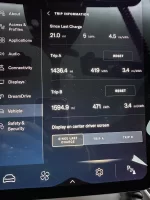- Joined
- Dec 11, 2021
- Messages
- 1,332
- Reaction score
- 1,660
- Cars
- Lucid air grand touring
Agree. This is part of due diligence. Before purchasing a newer technology like an electric vehicle, and especially from a brand new company, you must do your due diligence related to your own life. If high range is important to you and you live in a cold climate, an EV is not your best option. People do not do the research, depend on marketing materials that are obviously biased in favor of selling the product, and then buy the car and complain. I don’t understand that.
I am kind of baffled that there are still a relatively large number of individuals who are incessantly complaining about the range drop during cold weather. There is so much information on this phenomena that is easily accessible. EVs are suited for cold climates as long as one has a knowledge and understanding of their limitations. Even with my significant range dropped during winter, I still get close to 280 miles on a charge , even in the worst conditions. And hey winter doesn’t last forever so good times are on the horizon.

